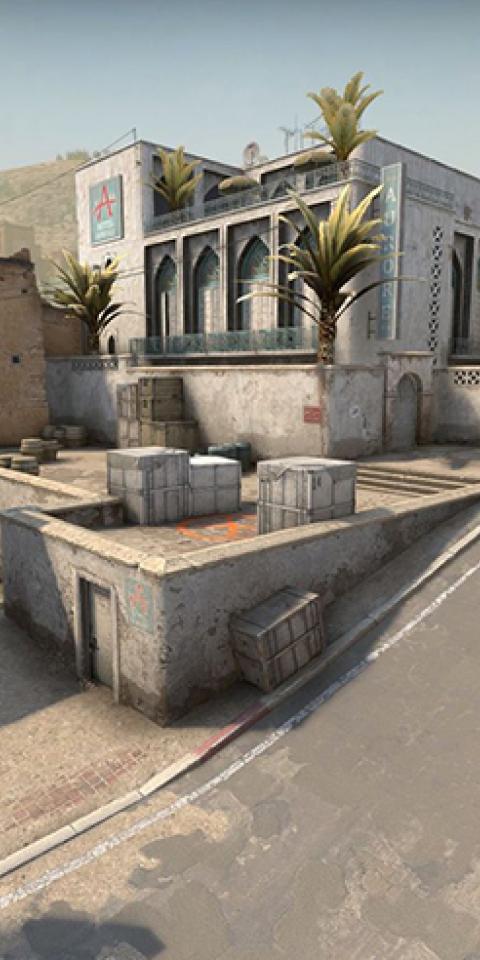Maps play a huge role in Counter-Strike. Each map is different from the next and provides a unique area for the match to be played out. Strategies vary wildly between maps, with some maps favoring either Counter-Terrorists or Terrorists, depending on the layout.
Every team has a list of preferred maps and maps they avoid, known as a map pool, and as such performance can drastically change between maps. It’s not uncommon to see a team lose extremely one-sidedly on their opponent’s map choice, then dominate on their own pick.
When it comes to wagering on CS:GO, knowing how the map system works is essential for success. That’s even more so if you’re betting in-play, as some maps are quite one-sided, and teams always favor certain maps. Knowing how a map is likely to play out can give you great insight into a match.
See Odds Shark’s Best Esports Sites
If you’re new to Counter-Strike and want to learn the basics first, make sure to check out our guide on the game. And if you’re keen to learn about the maps, then here’s everything you need to know.
CS:GO Map Basics
Currently, Counter-Strike: Global Offensive features seven maps on the competitive pool:
· Dust 2
· Inferno
· Mirage
· Nuke
· Overpass
· Train
· Vertigo
All of these maps have a completely different layout, meaning that there are different strategies, advantages and disadvantages to each map. For example, Dust 2 is a rather straightforward map, where utility usage is rather simple and strategies tend to be fairly uncomplicated. Therefore, it’s a common choice for teams that rely on their raw skills rather than tactics.
Teams build map pools depending on what type of play style they prefer. A great example to look at is Astralis. They built their team around flawless utility management and teamwork. As such, they focused on maps like Inferno, Nuke, Overpass and Train where great use of their resources gave them a large advantage.

However, there’s more to consider about maps. Another key factor to look at is how the layout affects the chances of the Counter-Terrorists and Terrorists. Some maps make defending easier, while others favor the attackers.
The main three maps you need to be aware of are Nuke, Train and Overpass. All three of these favor the Counter-Terrorists by quite a bit, especially Nuke. It’s not uncommon to see teams find only three or four rounds on the Terrorist side but then come back on the Counter-Terrorist side and win the map after a huge deficit. The other maps are quite balanced and see a lot of success on both sides, although with recent changes Dust 2 and Vertigo are very slightly leaning toward being Terrorist-favored.
How do CS:GO Teams Pick Maps?
Teams pick maps for their match through a map veto. Each team takes turns removing and picking maps, with the order depending on the event and format.
In a best-of-one, teams remove maps until there’s one left. Meanwhile, in a best-of-three, teams usually ban one map each, then pick one each, followed by banning one more each and using the remaining map as the final one.
Generally, teams will ban their least favorite map first, then pick their favorite, although sometimes a lot of strategy comes into the map veto. It all depends on the team’s preferences and how confident they feel against their opponents. For example, G2 Esports very rarely plays Overpass, but if they’re playing against an opponent who never plays it, they may prepare a few strategies and use it as a surprise pick.
How Maps Affect CS:GO In-Play Odds
Knowing which maps teams are likely to pick is a great way to get an edge on a wager ahead of time. However, most of the time when the maps are decided, the match is already in-play and the odds will fluctuate.
The picks themselves won’t change the odds too much, but once the game is live and a few rounds have been settled, map expertise really comes in handy.
Generally, when one team starts to take the lead, their moneyline odds on the map will decrease, while their opponents’ will increase. However, this can vary depending on the map.
Once again Nuke is the best example of this. If a team gets the lead on the favored Counter-Terrorist side, their odds will decrease, but not as much as other maps. Regardless, the odds will shift, and placing a wager on a team that is doing poorly on the Terrorist side will likely have a lot of value.

This also applies to halftime scores. A score of 8-7 is the closest a half can get in CS:GO and usually scores of 9-6 and 10-5 are considered quite close. However, on maps like Nuke, even a scoreline like 11-4 or 12-3 is pretty close.
Another thing to keep in mind is the type of rounds on a map. Winning the first round of the map gives teams an economical advantage, and generally secures the first three rounds for the team. Afterward, both teams should be on an even playing field economically, and the results can go either way.
You can go even further and add another layer by looking at which side a team prefers. This generally applies more to the even maps like Inferno and Mirage, and is something that does require quite a bit of game knowledge.
So, if you’re thinking about placing some in-play wagers on CS:GO, make sure to keep in mind which maps are being played and which team picked the map.
There are a ton of websites you can place your bets on and here is a list of the best ones. You can also shake up the action with some live prop bets, which you can learn all about in our CS:GO prop bet guide.




